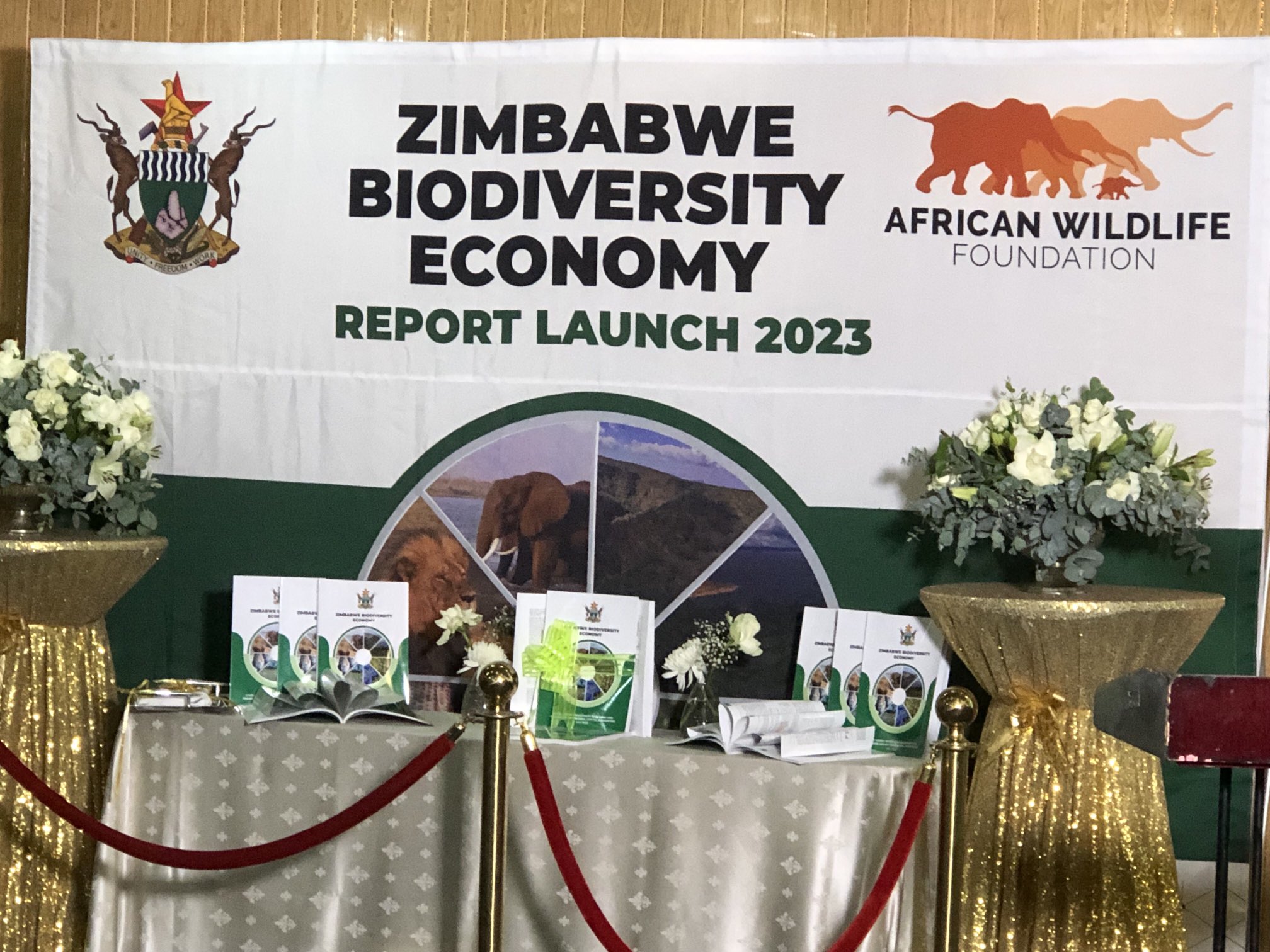Gvt, partners prime biodiversity sector for growth
Share

By Johnson Siamachira
Goromonzi (New Ziana) – On her two-hectare plot in Chikwaka, in Goromonzi district in Mashonaland East Province, Chipo Rusike has constructed 10 fishponds and stocked them with Nile tilapia (Oreocchromis niloticus), a fish that is easy to farm and fetches good
prices.
Rusike harvests between 4.5 to eight tonnes of tilapia every nine months
from her ponds.
Like Rusike, growing numbers of small-scale producers in Zimbabwe are
rearing tilapia, the common name for nearly a hundred species of fish
from the tilapine-cichlid family.
As a result of its high meat content, rapid growth and palatability,
tilapia is now the third most important fish in aquaculture globally.
Output is sharply rising as a combination of individual farmers, small
to medium enterprises and schools embark on tilapia fish farming to
improve incomes and diets.
Zimbabwe has a rich fisheries ecosystem with 144 fish species, including
30 exotic species, and over 12,000 dams.
Tilapine are among the easiest and most profitable fish to farm due to
their omnivorous diet, tolerance of high-stocking density and rapid
growth. An excellent source of protein and valuable micro-nutrients, and
low in saturated fat, carbohydrates and sodium, tilapia is making a
critical contribution to household food security in some regions of
Zimbabwe.
Whole tilapia are often processed into skinless, boneless fillets: the
yield is from 30 percent to 70 percent, depending on fillet size and
final trim. Small-scale producers and processors are being linked to a
thriving tilapia value chain developed by a local company, Lake Harvest
in Kariba in Mashonaland West Province.
Lake Kariba accounts for 90 percent of the country’s capture fishery
production, with bream and tilapia accounting for between 38 percent and
56 percent of total fish production.
Lake Harvest fish are filleted or whole gutted, packed and distributed
to local, regional and international markets, including Botswana,
Democratic Republic of Congo, Mozambique and South Africa.
With its own fish processing factory in Kariba town, the company offers
good opportunities for local participation in the value chain.
Smallholder farmers supply the feed input, mainly maize and soya beans,
and the small-scale informal sector is doing a brisk trade in the sale
of by products such as fish heads, and belly flaps.
Nationally, the fisheries sector employed 3 500 people in 2021, and
generated US$11.7 million in export revenues in 2019.
This is part of Zimbabwe’s biodiversity economy, which economists and
development practitioners have repeatedly said offers vast economic
opportunities for the country’s growth, but is under-exploited.
Zimbabwe is richly endowed with biodiversity, and supports a number of
iconic wildlife species.
However, its biodiversity is being lost at unprecedented rates through
fires, poaching, unsustainable natural resource harvesting practices,
illegal wildlife trafficking and trade and deforestation, among others.
Although the country has a rich biodiversity with economic benefits,
there is no systematic framework to fully measure biodiversity
contributions to economic development. The government has prioritized
four sectors that are important for the biodiversity economy, namely
wildlife, fisheries, forestry and bio-prospecting.
For starters, the Ministry of Environment and Wildlife partnered with
the African Wildlife Foundation (AWF) to produce the Zimbabwe
Biodiversity Economy (ZBE) Report, that sets a baseline on the value and
contribution of nature, and identifies viable business and investment
opportunities through which Zimbabwe can unlock the enormous potential
value in its rich biodiversity.
The ZBE report provides a framework that would help Zimbabwe to
mainstream the value and contribution of nature into development
planning, policy development, and decision-making on public and private
sector investment.
With funding support from AWF working with the Ministry, the ZBE report
stakeholder consultation process went through various stages, including
the hosting of an inception meeting to discuss its development in
September 2021 and the validation of findings and recommendations of the
study in April 2022, among other processes that led to the study’s
launch on September 13.
Officially launching the ZBE report, the Acting Permanent Secretary in
the Ministry of Environment and Wildlife, Tariro Musonza, highlighted
the importance of the ZBE Study in recognizing the key role of nature in
harnessing opportunities and the long-term growth of a biodiversity
economy for Zimbabwe towards the realization of an upper middle-income
economy by 2030.
“The main objective of the report is to ensure that the value of
biodiversity is recognized and mainstreamed in development planning and
national accounts for sustainable social and economic development,”
Musonza said.
She also pinpointed the need for a good legislative and policy framework
to anchor a successful biodiversity economy and commended efforts being
made by the government in reviewing various environment-related acts and
policies such as the Wildlife Policy, National Environmental Policy,
Environmental Management Act, and Parks and Wildlife Act.
The Wildlife sector contributes significantly to the economy of Zimbabwe
through nature–based tourism, sport hunting, and agriculture.
Sport hunting generates significant revenue, with an average of
US$28,859 per hunter and US$33 million in GDP contribution, according to
the ZBE report.
In 2019, more than 33 percent of all foreign tourists visited state
protected areas, generating 4.1 percent of GDP and 5.6 percent of
employment through nature-based tourism.
As part of supporting the country’s biodiversity economy, the
International Fund for Animal Welfare (IFAW) says the wildlife sector
must deploy strategies to address the threats to the resource base at
the site, national and trans-boundary levels.
IFAW country director Aleta Nyahuye, says: “Such interventions should
focus on securing the wildlife resource base, financing wildlife
protection and management, enhancing incomes and livelihoods from
wildlife-based value chains, and creating an enabling policy
environment.”
Milton Makumbe, director in the Department of Fisheries and Aquaculture
Resources Production (FARD) in the Ministry of Lands, Agriculture,
Fisheries, Water and Rural Development, highlights the Presidential
Community Fisheries Programme, as contributing to the country’s
biodiversity economy.
This scheme is targeting to stock a total of 1,200 dams under the
administration of the Zimbabwe National Water Authority (ZINWA)
country-wide with approximately 60,000,000 fingerlings of various fish
breeds.
Approximately 98 percent of water bodies are of small and medium size;
providing potential opportunities for sustainable fisheries development.
In 2019, aquaculture produced 37,752 tonnes of fish, while gillnets
produced 10,929 tonnes of fish valued at US$54.6 million.
Despite the abundance of fisheries resources, the economic contribution
of the fisheries sector is modest, with capture fisheries contributing
only 1.4 percent to the GDP, says the ZBE report.
The bio-prospecting and bio-trade sector has a significant contribution
to the economy and livelihoods in Zimbabwe.
In recent years, natural products have become popular with high-income
earners around the world.
Non-timber forest products (NTFPs), for example, generate more than
US$500 million annually for household subsistence use, and traditional
medicines account for an estimated US$60 million in the global market.
New Ziana







